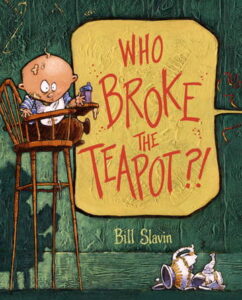 Who Broke the Teapot?!
Who Broke the Teapot?!
By Bill Slavin
Tundra Books
$16.99
ISBN: 978-1-77049-833-4
Ages 3-5
On shelves now
In the average life of a child, whodunits are the stuff of life itself. Who took the last cookie? Who used up all the milk and then didn’t put it on the shopping list? Who removed ALL the rolls of toilet paper that I SPECIFICALLY remember buying at the store on Sunday and now seem to have vanished into some toilet paper eating inter-dimension? The larger the family, the great the number of suspects. But picture books that could be called whodunits run a risk of actually going out and teaching something. A lesson about honesty or owning up to your own mistakes. Blech. I’ll have none of it. Hand me that copy of Bill Slavin’s Who Broke the Teapot?! instead, please. Instead of morals and sanctity I’ll take madcap romps, flashbacks, and the occasional livid cat. Loads of fun to read aloud, surprisingly beautiful to the eye, and with a twist that no one will see coming, Who Broke the Teapot?! has it all, baby. Intact teapot not included.
The scene of the crime: The kitchen. The family? Oblivious. As the mother enters the room it’s just your average morning. There’s a baby in a high chair, a brother attached to a ceiling fan by his suspenders, a dad still in his underwear reading the paper, a daughter eating pastries, a dog aiding her in this endeavor, and a cat so tangled up in wool that it’s a wonder you can still make out its paws. And yet in the doorway, far from the madding crowd, sits a lone, broken, teapot. Everyone proclaims innocence. Everyone seems trustworthy in that respect. Indeed, the only person to claim responsibility is the baby (to whom the mother tosses a dismissive, “I doubt it”). Now take a trip back in time just five minutes and all is revealed. The true culprit? You’ll have to read the book yourself. You final parting shot is the mother accepting a teapot stuck together with scotch tape and love from her affectionate offspring.
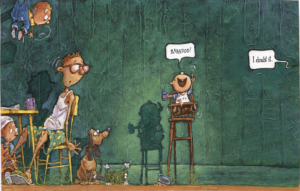 Generally when I write a picture book review I have a pretty standard format that I adhere to. I start with an opening paragraph (done), move on to a description of the plot in the next paragraph (so far, so good), and in the third paragraph I talk about some aspect of the writing. It could be the overall theme or the writing or the plotting. After that I talk about the art. This pattern is almost never mucked with . . . until today!! Because ladies and gents, you have just GOT to take a gander at what Mr. Slavin’s doing here with his acrylics. Glancing at the art isn’t going to do it. You have to pick this book up and really inspect the art. For the bulk of it the human characters are your usual cartoony folks. Very smooth paints. But even the most cursory glance at the backgrounds yields rewards. The walls are textured with thick, luscious paints adhering to different patterns. There’s even a touch of mixed media to the old affair, what with cat’s yarn being real thread and all (note too how Slavin seamlessly makes it look as if the yarn is wrapped around the legs of the high chair). Then the typography starts to get involved. The second time the mom says “Who broke the teapot?!” the words look like the disparate letters of a rushed ransom note. As emotions heat up (really just the emotions of the mom, to be honest) the thick paints crunch when she says “CRUNCHED”, acquire zigzags as her temper unfurls, and eventually belie the smoothness of the characters’ skin when the texture invades the inside of the two-page spread of the now screaming mother’s mouth.
Generally when I write a picture book review I have a pretty standard format that I adhere to. I start with an opening paragraph (done), move on to a description of the plot in the next paragraph (so far, so good), and in the third paragraph I talk about some aspect of the writing. It could be the overall theme or the writing or the plotting. After that I talk about the art. This pattern is almost never mucked with . . . until today!! Because ladies and gents, you have just GOT to take a gander at what Mr. Slavin’s doing here with his acrylics. Glancing at the art isn’t going to do it. You have to pick this book up and really inspect the art. For the bulk of it the human characters are your usual cartoony folks. Very smooth paints. But even the most cursory glance at the backgrounds yields rewards. The walls are textured with thick, luscious paints adhering to different patterns. There’s even a touch of mixed media to the old affair, what with cat’s yarn being real thread and all (note too how Slavin seamlessly makes it look as if the yarn is wrapped around the legs of the high chair). Then the typography starts to get involved. The second time the mom says “Who broke the teapot?!” the words look like the disparate letters of a rushed ransom note. As emotions heat up (really just the emotions of the mom, to be honest) the thick paints crunch when she says “CRUNCHED”, acquire zigzags as her temper unfurls, and eventually belie the smoothness of the characters’ skin when the texture invades the inside of the two-page spread of the now screaming mother’s mouth.
So, good textures. But let us not forget in all this just how important the colors of those thick paints are as well. Watching them shift from one mood to another is akin to standing beneath the Northern Lights. You could be forgiven for not noticing the first, second, third, or even fourth time you read the book. Yet these color changes are imperative to the storytelling. As emotions heat up or the action on the page ramps up, the cool blues and greens ignite into hot reds, yellows, and oranges. Taken as a whole the book is a rainbow of different backgrounds, until at long last everything subsides a little and becomes a chipper cool blue.
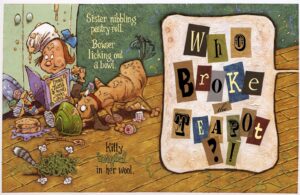 Now kids love a good mystery, and I’m not talking just the 9 and 10-year-olds. Virtually every single age of childhood has a weakness for books that set up mysterious circumstances and then reveal all with a flourish. Heck, why do you think babies like the game of peekaboo? Think of it as the ultimate example of mystery and payoff. Picture book mysteries are, however, far more difficult to write than, say, an episode of Nate the Great. You have to center the book squarely in the child’s universe, give them all the clues, and then make clear to the reader what actually happened. To do this you can show the perpetrator of the crime committing the foul deed at the start of the book or you can spot clues throughout the story pointing clearly to the miscreant. In the case of Who Broke the Teapot, Slavin teaches (in his own way) that old Sherlock Holmes phrase, “When you have eliminated the impossible, whatever remains, however improbable, must be the truth.”
Now kids love a good mystery, and I’m not talking just the 9 and 10-year-olds. Virtually every single age of childhood has a weakness for books that set up mysterious circumstances and then reveal all with a flourish. Heck, why do you think babies like the game of peekaboo? Think of it as the ultimate example of mystery and payoff. Picture book mysteries are, however, far more difficult to write than, say, an episode of Nate the Great. You have to center the book squarely in the child’s universe, give them all the clues, and then make clear to the reader what actually happened. To do this you can show the perpetrator of the crime committing the foul deed at the start of the book or you can spot clues throughout the story pointing clearly to the miscreant. In the case of Who Broke the Teapot, Slavin teaches (in his own way) that old Sherlock Holmes phrase, “When you have eliminated the impossible, whatever remains, however improbable, must be the truth.”
I love it when a book turns everything around at the end and asks the reader to think long and hard about what they’ve just seen. Remember the end of The Cat in the Hat when everything’s been cleaned up just in time and the mother comes in asking the kids what they got up to while she was gone? The book ends with a canny, “Well, what would YOU do if your mother asked YOU?” Who Broke the Teapot?! does something similar at its end as well. The facts have been laid before the readers. The baby has claimed responsibility and maybe he is to blame after all. But wasn’t the mother just as responsible? It would be very interesting indeed to poll a classroom of Kindergartners to see where they ascribe the bulk of the blame. It may even say something about a kid if they side with the baby more or the mommy more.
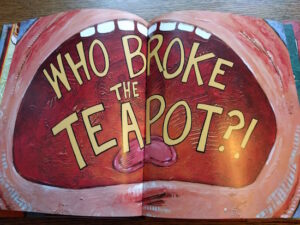 I also love that the flashback does far more than explain who broke the teapot. It explains why exactly most of the members of this family are dwelling in a kind of generally accepted chaotic stew. You take it for granted when you first start reading. A kid’s hanging from a ceiling fan? Sure. Yeah. That happens. But the explanation, when it comes, belies that initial response. The parents don’t question his position so you don’t question it. That is your first mistake. Never take your lead from parents. And speaking of the flashback, let’s just stand aside for a moment and remember just how sophisticated it is to portray this concept in a picture book at all. You’re asking a child audience to accept that there is a “before” to every book they read. Few titles go back in time to explain how we got to where we are now. Slavin’s does so easily, and it will be the rare reader that can’t follow him on this trip back into the past.
I also love that the flashback does far more than explain who broke the teapot. It explains why exactly most of the members of this family are dwelling in a kind of generally accepted chaotic stew. You take it for granted when you first start reading. A kid’s hanging from a ceiling fan? Sure. Yeah. That happens. But the explanation, when it comes, belies that initial response. The parents don’t question his position so you don’t question it. That is your first mistake. Never take your lead from parents. And speaking of the flashback, let’s just stand aside for a moment and remember just how sophisticated it is to portray this concept in a picture book at all. You’re asking a child audience to accept that there is a “before” to every book they read. Few titles go back in time to explain how we got to where we are now. Slavin’s does so easily, and it will be the rare reader that can’t follow him on this trip back into the past.
I think the only real mystery here is why this book isn’t better known. And its only crime is that it’s Canadian, and therefore can’t win any of the big American awards here in the States. It’s also too amusing for awards. Until we get ourselves an official humor award for children’s books, titles like Who Broke the Teapot?! are doomed to fly under the radar. That’s okay. This is going to be the kind of book that children remember for decades. They’re going to be the ones walking into their public libraries asking the children’s librarians on the desks to bring to them an obscure picture book from their youth. “There was a thing that was broken . . . like a china plate or something . . . and there was this cat tied up in string?” You have my sympathies, children’s librarians of the future. In the meantime, better enjoy the book now. Whether it’s read to a large group or one-on-one, this puppy packs a powerful punch.
On shelves now
Source: Publisher sent final copy for review.
Like This? Then Try:
- Mitzi Tulane, Preschool Detective in What’s That Smell? by Lauren McLaughlin, ill. Devvie Ridpath Ohi
- The Web Files by Margie Palatini
- I Want My Hat Back by Jon Klassen





 Author:
Author: 
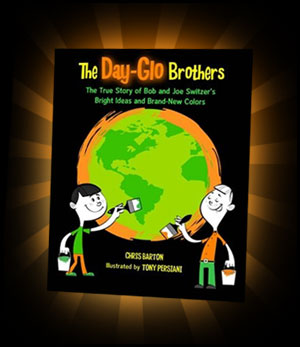
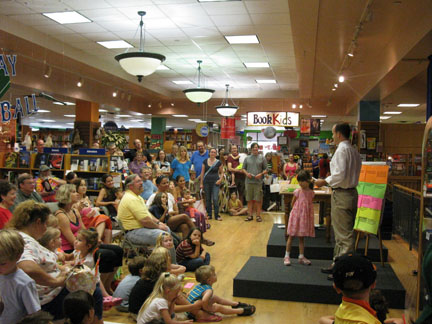

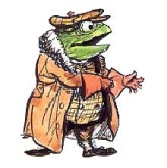



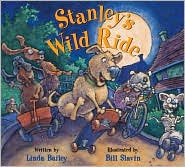



Thanks so much, Elizabeth, for that wonderful review. I’m so very glad that you enjoyed the book!
Warm regards,
Bill
Hi Elizabeth,
A very proud big brother writing here, and delighted that you have discovered this remarkable talent who was just the kid in the highchair when I was 10. Like you, I inhale the detail in every book he produces. Such transcendent stuff!
Alas, we are indeed northern border other-siders… but Bill does have a stellar Canadian publishing track record, worth exploring.
Enough,
~ Jim
I know it well. Actually, I was very pleased to see this book prominently displayed in some bookstore windows when I took a trip to Stratford, ON this summer. Clearly he is beloved up there. Let’s see what we can do about transferring some of that love (or, at the very least, recognition).
Loved this immediately and have read it to every storytime and outreach group, booktalked it to other librarians and gotten a few of them to love it. It’s been a hit with everyone I’ve read it to. One of my favorites of the year!